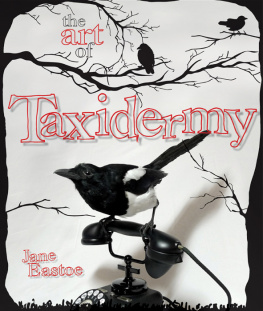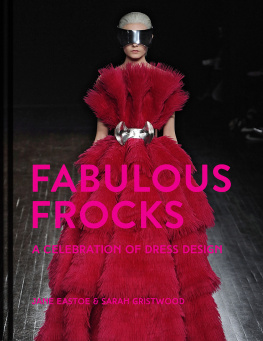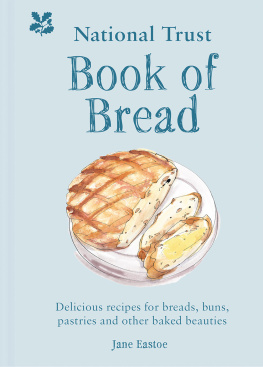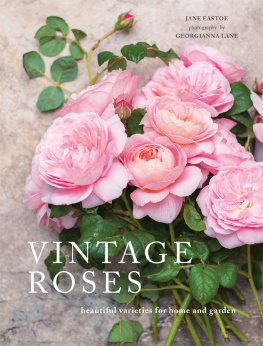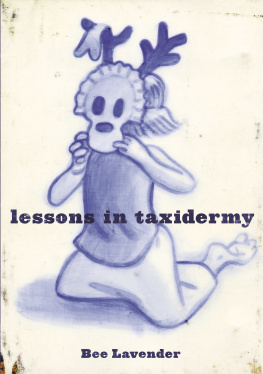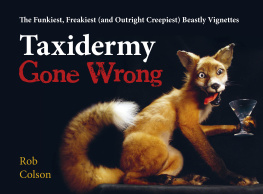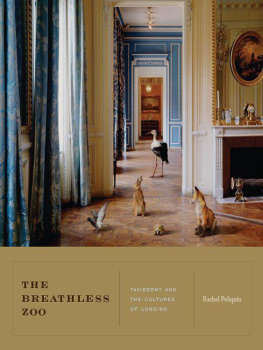About the author
Jane Eastoe has been a journalist and author for 25 years. For many years she worked for the fashion business press, for whom she regularly covered the international collections and interviewed designers from Gaultier to Galliano. She is the co-author of Fabulous Frocks and Elizabeth: Reigning in Style, also published by Pavilion. She has been writing for the National Trust Books list for the last four years and was the chief contributor to the National Trust Book of the Countryside. Her other books include Wild Food, Keeping Hens, Home-Grown Fruit, Allotments, Herbs, Hedgerows & Wildlife and Mushrooms. Jane has produced two books linked to television series: Victorian Pharmacy and Britain by Bike, which won Outdoor Book of the Year at the 2011 Hay Festival. In her spare time Jane is a keen amateur bird taxidermist.

An uncased African guinea fowl of unknown origin.

First published in the United Kingdom in 2012 by
PAVILION BOOKS
10 Southcombe Street,
London W14 0RA
An imprint of Anova Books Company Ltd
Text Jane Eastoe, 2012
Foreword text Polly Morgan, 2012
Design and layout Anova Books, 2012
Photography see Picture Credits on p.160
The moral right of the author has been asserted.
All rights reserved. No part of this publication may be reproduced, stored in a retrieval system, or transmitted in any form or by any means electronic, mechanical, photocopying, recording or otherwise, without the prior written permission of the copyright owner.
Commissioning editor: Emily Preece-Morrison
Project editor: Nina Sharman
Designers: Georgina Hewitt and Allan Sommerville
Special photography: Beth Evans
Stylist to special photography: Sophie Brown
First ebook publication 2012
Ebook ISBN: 9781909108356
Also available in hardback
Hardback ISBN: 9781862059870
www.anovabooks.com

COVER IMAGE For Sorrow by Polly Morgan, 2007, shows a magpie on an original Bakelite telephone. The work explores Morgans phobia of telephones a conduit for bad news the warning magpie crouches on the cradle and guards against the call being received.
Acknowledgements
I am deeply indebted to all the people who generously gave up their time to talk to me, share their expertise, pass on their contacts, patiently tolerate my endless queries and give me tremendous encouragement. I must in particular thank the following: artist Polly Morgan who kindly agreed to write the thought-provoking foreword to this book and whose work revived my long dormant interest in taxidermy; collector Errol Fuller who gave up hours of his time and put up with much inconvenience; sculptor and taxidermist Emily Mayer who patiently explained her work; and taxidermist Carl Church who gave me a display of the process as he passed on his wisdom. Simon Wilson of Animal Animatronics explained the use of taxidermy in contemporary media, and Andrew Kitchener and Phil Howard from The Museum of Scotland who detailed the scientific and educational significance of both historic and contemporary taxidermy.
This book would not have been completed without the support of my husband Eric, the cynical questions of my children Teddy and Genevieve, and the superb subbing skills of my daughter Florence. At Anova I am continually thankful for the help and support of Polly Powell, Emily Preece-Morrison, Charlotte Selby and the wonderful Nina Sharman. I am also indebted to Georgina Hewitt and Allan Sommerville for their superb design skills and endless patience. Finally, I must thank David Leggett, who first explained the mysteries of taxidermy to me and who inspired me to write the book.

foreword

On an almost daily basis I am asked the question, Why taxidermy? and, even after eight years, I struggle to find an adequate answer. The first thing that springs to mind is Why not taxidermy?, as it seems odd to me that anyone should even wonder why I leapt at the chance to learn something that fulfills the fundamental needs to be creative and to understand the natural world.
One would think that the car fanatic who had never once lifted the bonnet to examine the engine was rather shallow. Yet the number of so-called animal lovers Ive met who disdain taxidermy go unquestioned. I think this is because there are different degrees of animal love. There is the sentimental kind, where their vulnerability inspires a longing to protect and there is another, more sensuous kind, where the physicality of the creature is admired. The former I have always had in abundance while the latter, evident in my despair when yet another creature fled as I loomed in, had been lying dormant. It was a seed, germinated by taxidermy, that has blossomed into something more mature; a sincere respect for the animal form borne of a better understanding of how flesh and bone is structured to maximum effect, and how we see beauty in efficiency and reason.
Therefore, I baulk at the accusation that taxidermy doesnt treat an animal with respect. Providing that the animal has been allowed to live and die as nature intended then this is respect enough for me.
To worry about what becomes of the remaining flesh and bone is to foist human codes onto a kingdom that frequently eats its own dead. The worst crime I see committed against animals by the taxidermist is to deprive a crow of a meal. Lets give respect to living animals by allowing them their freedom and to dead ones by doing our taxidermy as well as can be. This way we can enjoy them once theyve finished with their bodies rather than cage them while theyre still inhabited.
When I first became interested in the subject it was considered to be a dying art (no pun intended). I would disagree and say that it is an evolving art. For so long taxidermists have been mimicking the natural habitat of their subject, with the occasional interruption from the likes of Walter Potter, seen as a lone eccentric and a less than skilled taxidermist. I hope that the work I do, and of other artists working in a similar vein, can ensure the survival of taxidermy by giving it a place in modern life. Just as photography put an end to much commissioning of painted portraits, so zoos, high definition video and cheap travel have seen the redundancy of many taxidermists, originally employed to educate us in natural history. Painting has survived, developing from figuration to abstraction, and so taxidermy must make similar shifts if it is to be considered the art I believe it is.
For too long taxidermy has undeservedly been the guilty secret of a few misunderstood practitioners and collectors, and at long last we have a book to herald its inclusion in popular culture.
Polly Morgan, 2012

Black Fever by Polly Morgan, 2010, is a cluster of crow wings inspired by Eadweard Muybridges photographic images of motion. Seven strata of wings gradually unfurl like a Mexican wave, demonstrating the rules of flight.

